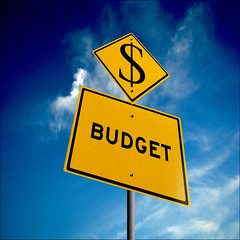3 Key Steps to Eliminate Personal Debt
If you are like many others, you are floundering under the heavy burden of personal debt from student loans, car loans, credit cards and more. This debt may be preventing you from saving for emergencies, planning for the future and leading the life that you otherwise could afford to lead if you didn’t have so much debt on your shoulders. The fact is that debt can have far-reaching effects on your life, and it can be difficult to eliminate. However, by following three key steps, you may start to see your debt balances shrink over time.
1. Fund an Emergency Savings Account
Many people who strive to pay down debt balances often are forced to rely on debt for emergency situations, budget shortfalls and more. As long as you continue to use debt, your debt balances will continue to increase rather than decrease. Therefore, one of the first steps that you should take is to fund an emergency savings account. Start with $20, $40 or as much as you can afford in this account, and slowly contribute more money to it on a regular basis. This account can be used to cover financial emergencies and other issues, and you can stop relying on your credit cards. Even if you need to dip into your savings account one month, your credit card balances will continue to decrease.
2. Develop a Realistic Budget
While unexpected expenses can cause you to continue to use debt, many people fail to budget and plan for expenses that they know they will be faced with in the coming months. For example, have you started saving for holiday presents, new clothes for the family for the next season, those new tires that your car needs and more? By failing to plan and save for these expenses, you are ensuring that you must rely on your credit cards to pay for them. In order to avoid relying on debt to pay for expenses, you must develop a budget that includes every expense that you have. This includes the regular expenses like your car payment and utility bill. It also includes periodic or one-time expenses. To account for this, you may need to create sub-savings accounts and contribute a small amount of money into those accounts for several months to accumulate the money you need. Another option is to develop a budget that covers all income and expenses that you expect to incur over the next three to six months. By projecting your spending outward, you can more easily account for these periodic or infrequent expenses in your life.
3. Monitor Your Progress
Once you stop using your credit cards and relying on debt, you will notice that your debt balances do start to decrease with time. Take time today to list out the current balance of each of your debts as well as the monthly payments. This will be a static column that never changes. Then, create a second column on your list that will be for your current balance and monthly payment. Each month that you don’t make charges to credit cards and use revolving debt, you will notice that your account balances and monthly payments generally will decrease. Furthermore, your fixed payments will also work to effectively decrease debt balances on car loans, your mortgage and more. Tracking your progress can help you to keep your focus attuned to living within your budget.
Some people have extra money available to make significantly larger payments on their debts than are due, but others do not. By following these three key steps, even those who can only afford to make the minimum payments on their accounts can work to make slow but steady progress toward debt elimination.
Author Bio
Sara is an active nanny as well as an active freelance writer. She is a frequent contributor of http://www.nannypro.com/.

Category: Debt, Family Finances







Thank you for sharing and agree with the steps you mention. Aside from it there are other options in paying debt like refinancing and consolidation in paying.
The refinancing option may not work for some people who are upside down in their mortgage or have reduced incomes because of the recession and can’t qualify any more.